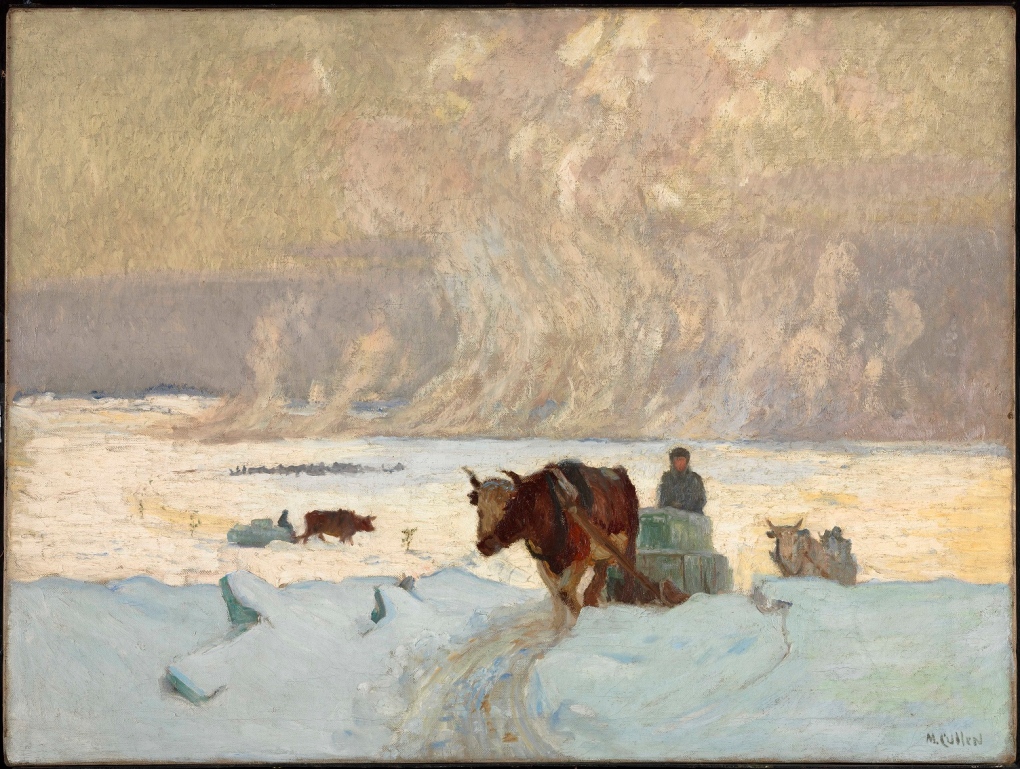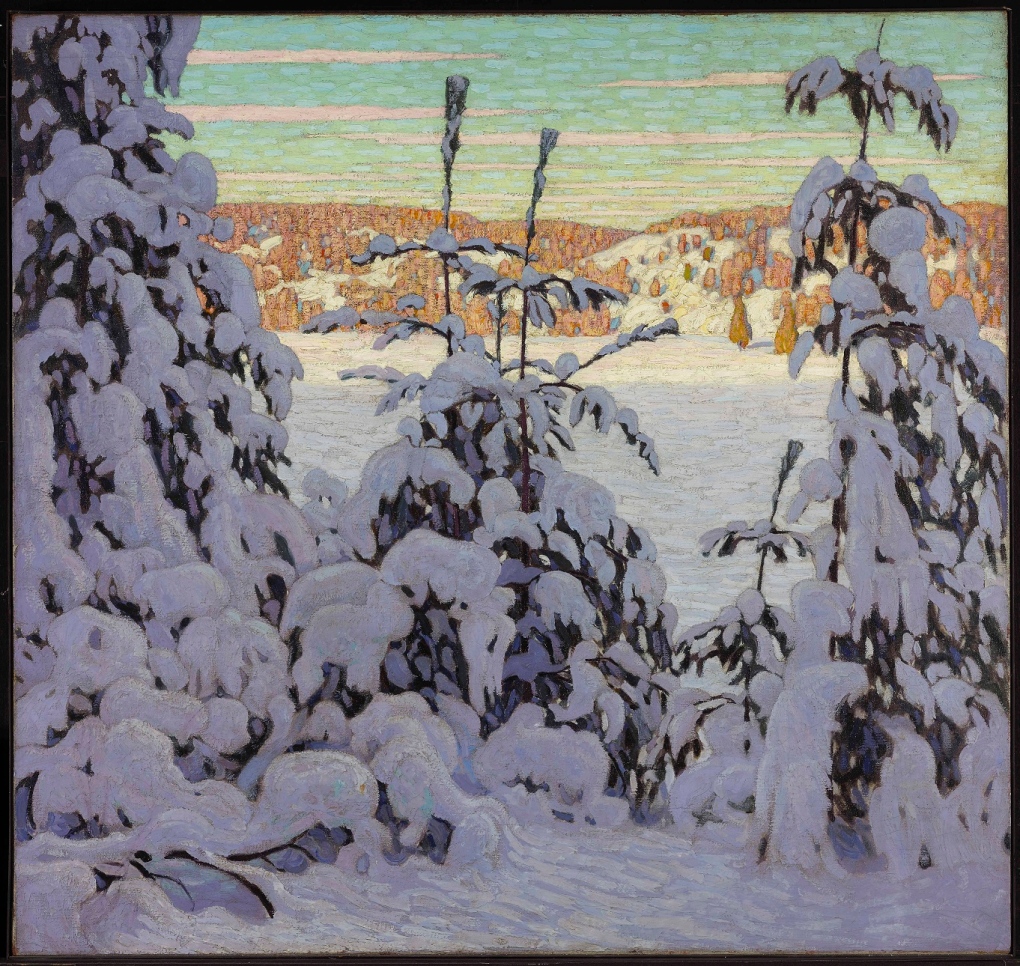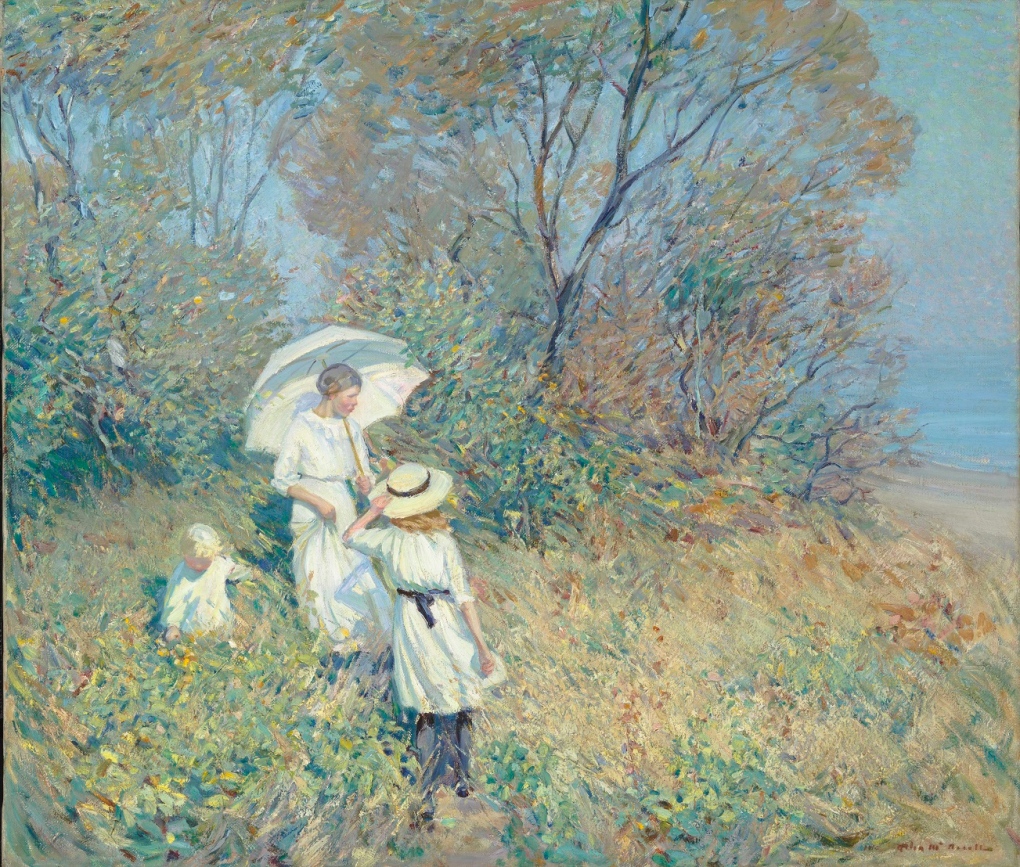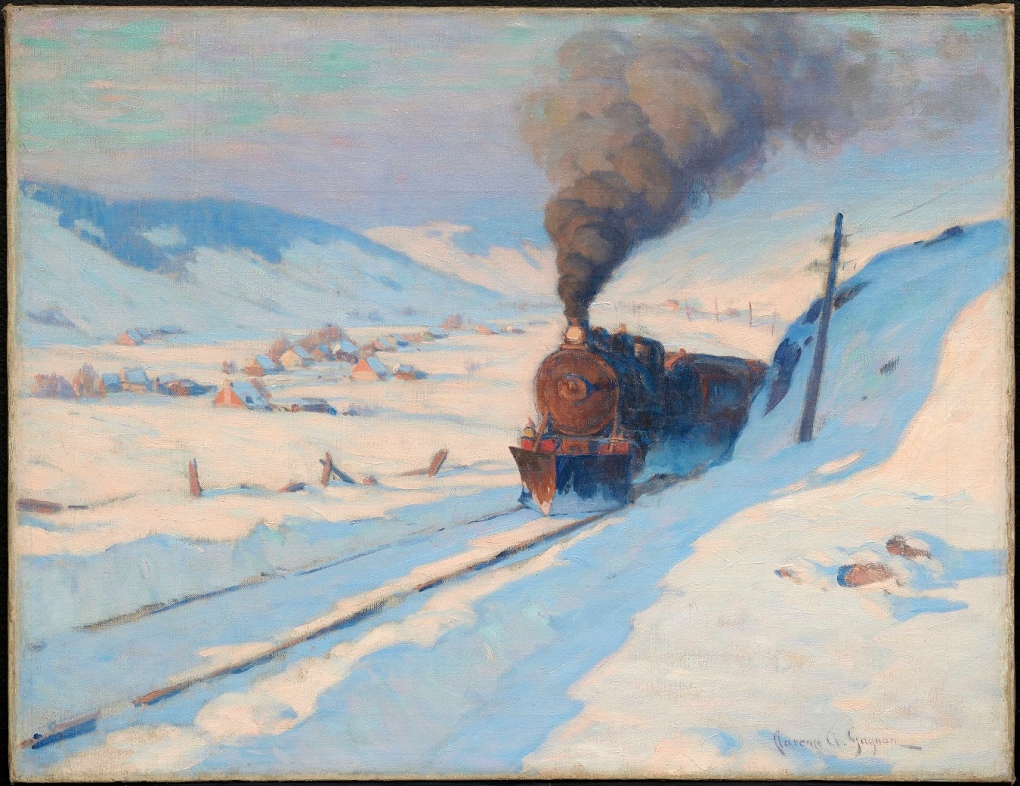Escape to Beauty: 'Canada and Impressionism' at the National Gallery of Canada
If you were asked to name a few of “The French Impressionists”, chances are you could do it.
Those names roll off our tongues like the drops of dew roll off Monet’s water lilies at Giverny.
What if you were asked to name some of the many incredibly gifted Canadian Impressionist painters?
If that’s a struggle, you have a rich and colourful opportunity to learn more about these artists in a stunning new exhibition at the National Gallery of Canada.
Call it a beautiful chance to escape to beauty.
 Maurice Cullen 'The Ice Harvest', c. 1913, oil on canvas, 76.3 × 102.4 cm, National Gallery of Canada, Ottawa (Photo: NGC, Ottawa.)
Maurice Cullen 'The Ice Harvest', c. 1913, oil on canvas, 76.3 × 102.4 cm, National Gallery of Canada, Ottawa (Photo: NGC, Ottawa.)
Maurice Cullen 'The Ice Harvest', c. 1913, oil on canvas, 76.3 × 102.4 cm, National Gallery of Canada, Ottawa (Photo: NGC, Ottawa.)
This is your first weekend to experience: 'Canada and Impressionism: New Horizons'.
After a long COVID closure, and an additional delay due to the "Freedom Convoy" demonstration in downtown Ottawa, this exhibition finally officially opened on March 1.
It was worth the wait.
One hundred plus canvases by 36 Canadian artists are brought together with the passion and precision of Katerina Atanassova, the Senior Curator of Canadian Art at The National Gallery of Canada.
"Prepare for fun, joy, beautiful sunny images of Canadians abroad and at home," Atanassova says.
"I think every painting will be a revelation—the number of women as well, introduced in the exhibition," Atanassova shared during a tour for CTV News at Noon.
"The depth and breadth of the exhibition!" Atanassova effuses.
"The number of artists coming from coast to coast to coast. We have artists from Vancouver all the way to Halifax. In addition, by the time they returned home—the celebration of winter—the essential Canadian experience."
Atanassova is referring to the many breathtakingly beautiful snowscapes.
 Lawren S. Harris 'Snow II', 1915, oil on canvas, 120.3 × 127.3 cm, National Gallery of Canada, Ottawa © Family of Lawren S. Harris (Photo: NGC, Ottawa.)
Lawren S. Harris 'Snow II', 1915, oil on canvas, 120.3 × 127.3 cm, National Gallery of Canada, Ottawa © Family of Lawren S. Harris (Photo: NGC, Ottawa.)
Lawren S. Harris 'Snow II', 1915, oil on canvas, 120.3 × 127.3 cm, National Gallery of Canada, Ottawa © Family of Lawren S. Harris (Photo: NGC, Ottawa.)
Paintings by Gagnon, Cullen, Morrice and Harris— to name a few—are all so magical you will feel the frost on your face.
The Canadian artists travelled to Paris to train.
"When the Canadian painters arrived in Paris around 1880, the novelty of Impressionism had already begun to wane," Atanassova writes in her book about the exhibition.
"The Canadians who moved to Paris in the last decades of the nineteenth century encountered this air of change amid what became known as the juste milieu—the middle ground between Academicism and Impressionism from which each artist cultivated a personal and unique approach," writes Atanassova.
Their approach throughout the exhibition is a wonderful escape for visitors on a cold March day.
Helen McNicoll’s works may make you feel sunshine on your back.
There is an area featuring 'reflections of childhood'.
"This is a section dedicated to ‘Youth and Sunlight,'" explains Atanassova.
 Helen McNicoll 'Sunny September', 1913, oil on canvas, 92 × 107.5 cm, Collection of Pierre Lassonde (Photo: MNBAQ, Idra Labrie)
Helen McNicoll 'Sunny September', 1913, oil on canvas, 92 × 107.5 cm, Collection of Pierre Lassonde (Photo: MNBAQ, Idra Labrie)
Helen McNicoll 'Sunny September', 1913, oil on canvas, 92 × 107.5 cm, Collection of Pierre Lassonde (Photo: MNBAQ, Idra Labrie)
"You are seeing these remarkable images by a number of great Canadian artists, including some not so familiar names, such as Henry Rosenberg and Mary Bell (Eastlake)."
You cannot help but be drawn to the painting "In the Cellar Window" by George A. Reid.
"This image of a child stealing a moment free of the labour of activities, during the day, to read a book," comments Atanassova.
Our tour for CTV Ottawa’s News at Noon offered a sense of the space but not the full experience.
While we featured many paintings, you will have to visit the gallery in person, to see the full collection, as several pieces cannot be shared on TV.
"We show everything in the gallery spaces but we only have the copyright of some of the images to show on screen," explains the curator.
 Clarence Gagnon 'The Train, Winter' c. 1913–14, oil on canvas, 56 x 71 cm, Private Collection (Photo: NGC, Ottawa.)
Clarence Gagnon 'The Train, Winter' c. 1913–14, oil on canvas, 56 x 71 cm, Private Collection (Photo: NGC, Ottawa.)
Clarence Gagnon 'The Train, Winter' c. 1913–14, oil on canvas, 56 x 71 cm, Private Collection (Photo: NGC, Ottawa.)
All the more reason to buy a ticket, which you will have to book in advance. COVID protocols are in place. You need to show proof of vaccination.
Atanassova is excited visitors are back in the gallery and to share the first exhibition of its kind—the untold story of the spread of Impressionism and the role of Canadian Impressionists in the development of modern art in Canada.
The featured works were all created between the 1880s and the late 1920s, at home and abroad.
"The major discovery for everyone will be that the voices of so many Canadian men and women—Canadian Impressionists and the fact that these Canadian artists had something very important to share with the world—and their voices are heard," Atanassova says.
And fortunately for us, those voices are to be enjoyed visually.
An adapted version of this exhibition has already travelled to Munich, Germany; Lausanne, Switzerland; and Montpellier, France. The European audiences, unaware of the contribution of Canadian artists to the Impressionist movement, shared rave reviews.
The exhibition, presented in Ottawa, is organized around seven major themes while following a chronological progression.
Visitors to the gallery, through the paintings, will experience the artists celebrating everyday life—in Paris, or at the popular seaside resorts along the coasts.
Two of Canada’s best-known groups of modern painters—the Beaver Hall Group, of Montreal, and the Group of Seven, of Toronto —are shown along with the late Impressionists.
The final canvases in the exhibition are two powerful portraits, bookending a door, one by Edwin Holgate, the other by Prudence Heward.
"The story of the spread of Impressionism in Canada is no longer a missing chapter in the history of world Impressionism,” says Atanassova.
"Until very recently, the contribution of Canadian Impressionists was barely known both in Canada and abroad."
"Our hope is that after seeing it, Canadians will come away with a greater sense of pride and joy in recognizing the achievements of these exceptionally talented painters," says Atanassova, who produced a scholarly publication to accompany the exhibition.
"Canada and Impressionism: New Horizons” is on at the National Gallery of Canada until July 3.
If you would like to wow your pals with some Canadian artist name-dropping, featured in the show—here’s a bit of a cheat sheet.
Celebrated women:
- Mary Bell (1864–1951)
- Florence Carlyle (1864-1923)
- Emily Carr (1871–1945)
- Prudence Heward (1896–1947)
- H. Mabel May (1877–1971)
- Helen McNicoll (1879–1915)
- Kathleen M. Morris (1893–1986)
- Laura Muntz (1860–1930)
- Sophie Pemberton (1869–1959)
Their male counterparts
- Henri Beau (1863–1949)
- Franklin P. Brownell (1857–1946)
- William B. Bruce (1859–1906)
- William H. Clapp (1879–1954)
- Maurice Cullen (1866–1934)
- Clarence Gagnon (1881–1942)
- Lawren S. Harris (1885-1970)
- Ernest Lawson (1873–1939)
- James W. Morrice (1865–1924)
- Paul Peel (1860–1892)
- Robert Pilot (1898–1967)
- Arthur Rozaire (1879–1922)
- Marc-Aurèle de Foy Suzor-Côté (1869–1937)
Works of theirs are featured in the exhibition.
CTVNews.ca Top Stories

BREAKING PM Trudeau says he thinks Trump is using talk of Canada becoming 51st state to distract from tariff impact
Prime Minister Justin Trudeau says he thinks U.S. president-elect Donald Trump is drumming up drama on Canadian statehood to detract from tariff talks.
LIVE UPDATES Here's the latest on the most destructive fire in L.A. County history
A series of wildfires are tearing through densely populated parts of the Los Angeles, Calif. area. Five people have been reported dead. U.S. Gov. Gavin Newsom says thousands of resources have been deployed to contain the fires.
Multiple Chinese warships track Canadian HMCS Ottawa through the South China Sea
The silhouettes of a hulking Chinese Navy destroyer dubbed 'Changsha' and a warship called the 'Yuncheng' can been seen hovering along the horizon, mirroring HMCS Ottawa’s movements.
Canadian travellers now require an ETA to enter U.K. Here's what to know
Starting Jan. 8, Canadians visiting the U.K. for short trips will need to secure an Electronic Travel Authorization (ETA) before boarding their flight, according to regulations set out by the U.K. government.
'True when I said it, true today': former Canadian PM Harper pushes back against Trump on social media
Former prime minister Stephen Harper doesn’t find U.S. president-elect Donald Trump’s jibes about Canada becoming the 51st U.S. state very amusing.
Toronto police investigating parental abduction, three-year-old boy believed to be in India
A parental abduction investigation is underway after a father allegedly failed to return to Canada with his three-year-old son after a trip to India, Toronto police say.
More than 150 students sick at University of Guelph, says public health
More than 150 cases of gastroenteritis have been reported at the University of Guelph.
'Side by side': How one B.C. couple is finding joy in the face of devastating circumstances
Hayley and Bill Atkinson’s love story begins that night he abruptly left in the middle of playing a card game with friends, and didn’t return for a long time.
Jimmy Carter's funeral brings together 5 current and former U.S. presidents to honour one of their own
For a service that stretched more than an hour, the feuding, grievances and enmity that had marked their rival campaigns and divergent politics gave way to a reverential moment for one of their own.

































